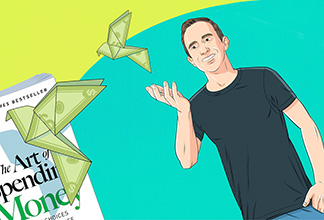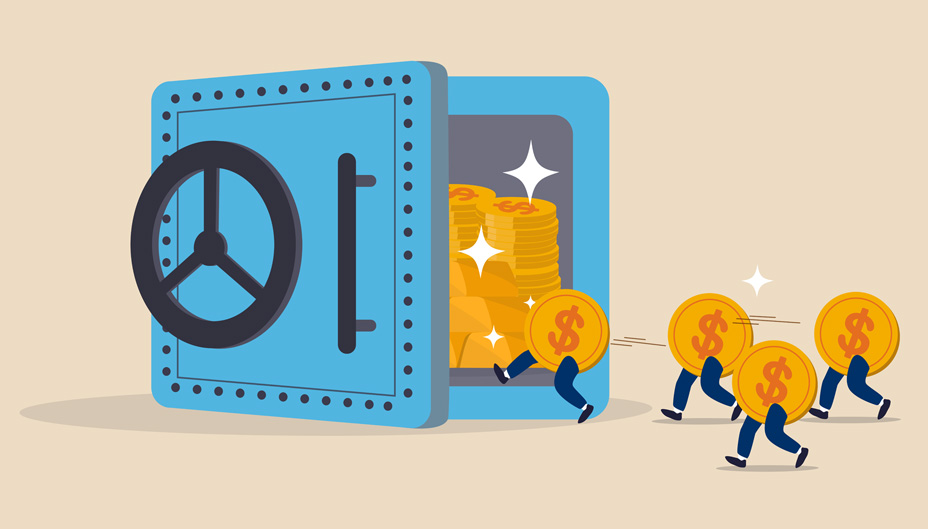Thinking About Dividend Stocks? Here's What You Need to Know
Written by The Inspired Investor Team
Published on May 12, 2025
minute read
Share:
As interest rates have come down over the last several months, leading to yields on many assets such as guaranteed investment certificates (GICs) and bonds declining, some investors are once again considering dividend-paying stocks to potentially boost returns.
"So much money has been tied up in GICs because you could get a 5% guarantee," says Irene Fernando, co-head of North American Equities and manager of the RBC Canadian Dividend Fund, along with Sarah Neilson. "But as interest rates have come down, you can't get those rates anymore, and you have to look elsewhere for a similar return."
Dividends might seem attractive because they offer investors a steady stream of income that they can use to buy more shares of that company or take as cash. However, not all payers are created equal. Before buying into a dividend-paying business, it's important to understand how these stocks work.
The ins and outs of dividends
Some organizations pay dividends – which are usually regular payments made from company earnings to shareholders – to attract investors to buy a stock or reward people for owning shares in that business. Dividend payers are companies that have paid a dividend per share within the past 12 months, and dividend growers are companies that have a history of consistently increasing their dividend payments over time. Growth companies on the other hand, are companies that focus on reinvesting much of their earnings back into the company) rather than making payment to shareholders.
Generally, though not always, dividend payers are stable, slower-growing companies that can do well in most economic environments. This is in part because they need steady cash flows to make regular payments. And given that investors come to rely on these distributions to help increase overall returns, if a company runs a risk of dividend decrease, its stock price can fall significantly, says Neilson.
Because of the stability of dividend payers, their share prices tend not to appreciate as quickly as those of growth companies might. Canadian dividend growers have historically tended to outperform TSX over the long run – as was the case in the past ten and twenty years.*
That doesn't mean dividend payers can't produce generous returns. "Dividends are an amazing compounding vehicle," says Fernando, pointing out that these payments can significantly boost total returns when reinvested year after year.
More than a number
The dividend yield, expressed as a percentage, shows how much a company pays to shareholders relative to its share price. If a company pays $5 in dividends yearly on a stock trading at $100 per share, it has a 5% yield. Some people think the highest-yielding stocks are the best ones to buy, but there's a lot more that should go into your buying decision than a lofty number.
You can't simply look at dividend yield as an indicator of whether the payout is good because when shares fall, yields rise and vice versa. For instance, if that same stock paying a $5 annual dividend falls to $50, the dividend yield is now 10%. And although that might sound enticing, it could also mean added risk. "A high dividend yield is something to stop and pause and look at so that you understand what's driving it," Neilson says. "It could indicate that there's little room for growth and reinvestment in the business as well." In some instances, it could mean the company may not be able to continue to make its payments and be forced to cut its dividend.
One way to help decide if a company can sustain its dividend is to look at its payout ratio, which indicates how much of a company's net income (earnings minus expenses, interest and taxes) is being paid to shareholders. If a company has a payout ratio that exceeds 100 per cent, then it is paying all its earnings out as dividends and potentially tapping into other sources of funds, such as debt, says Fernando.
With that said, a high payout ratio isn't always cause for concern, and numbers can vary by industry. For instance, the average payout ratio of the top six Canadian banks is estimated to be 51 per cent, according to Bloomberg, data from April 2025, while the top 10 Canadian utilities by market cap have a payout ratio of 68 per cent. The former has a lower ratio because banks need capital to grow their businesses through loans and other investments, says Fernando, while the latter sector generates reliable cash flows through monthly bills.
Typically, it’s good for a company's payout ratio to be below 100 per cent, because that way they’ll have at least some money to put back into operations or help during a downturn. "We look for companies that can generate consistent and growing cash flow to support dividend payments and leave themselves a cushion so they're able to reinvest in the business, and so they don't get squeezed in times of earnings volatility," Neilson says.
Earnings and dividend growth
Ideally for Neilson and Fernando, a company would grow earnings and dividends every year. "If your earnings grow and then dividends grow with the earnings, then you can have stable yield," says Fernando, pointing out that a 4 per cent yield today should in theory remain 4 per cent in three years if dividends grow at the same rate as earnings and valuation does not change dramatically. However, yields can change because of economic events (like downturns or recessions), central bank rates, etc. Share prices also often rise along with earnings, and "if you have earnings growing at 7 per cent per year [plus a 4 per cent dividend yield], then your total return is 11 per cent."
Of course, there may be reasons why a business may hold back on increasing its payments – for example, if interest rates climb, financial companies may not increase their dividends one year because they need to hold money back to cover potential defaults. "You still need to have discipline," says Fernando.
If a company doesn't have that discipline and the payment gets cut, it can often turn investors off that stock. "When a cut happens, it can take many years for a company to get back the shareholders they've lost because there's more uncertainty," adds Neilson.
Diversifying with dividends
If you own dividend stocks, you can choose to receive your payout in cash. You might also consider activating a dividend reinvestment plan,1,2 better known as a DRIP, which automatically reinvests any payouts back into that company, giving you additional shares. This strategy, which many businesses allow for – though not all, makes it easy to increase the number of shares of that company you have in your portfolio without having to execute a trade yourself. If you get $10 in dividends and the stock costs $10 to purchase, you’ll now have one more share in that operation. Find out more about DRIPs here.
Ultimately, while dividend stocks may provide regular income and potentially be less volatile than growth stocks, growth companies can sometimes offer faster price appreciation. "You could consider having both," says Fernando about dividend and growth stocks. "One can provide more juice to a portfolio, and one has the potential for compounding or income. Dividend stocks are often favoured by investors who want stable, steady income growth and less volatility in tougher economic times."
Sources
* RBC Global Asset Management, "The power of dividends", March 2024
RBC Direct Investing Inc., RBC Global Asset Management Inc. and Royal Bank of Canada are separate corporate entities which are affiliated. RBC Direct Investing Inc. is a wholly owned subsidiary of Royal Bank of Canada and is a Member of the Canadian Investment Regulatory Organization and the Canadian Investor Protection Fund. Royal Bank of Canada and certain of its issuers are related to RBC Direct Investing Inc. RBC Direct Investing Inc. does not provide investment advice or recommendations regarding the purchase or sale of any securities. Investors are responsible for their own investment decisions. RBC Direct Investing is a business name used by RBC Direct Investing Inc. ® / ™ Trademark(s) of Royal Bank of Canada. RBC and Royal Bank are registered trademarks of Royal Bank of Canada. Used under licence.
© Royal Bank of Canada 2025.
1. Dividends earned pursuant to DRIP may be subject to requirements imposed by the Income Tax Act (Canada). It is your responsibility to ensure that any associated tax requirements or obligations are satisfied.
2. The list of DRIP eligible securities is subject to change at any time without prior notice. RBC Direct Investing will purchase whole shares only. Some exclusions may apply. Some eligible securities such as preferred shares and voting class common shares will not reinvest into additional units of the same security but rather the underlying non-voting common share or similar security.
Any information, opinions or views provided in this document, including hyperlinks to the RBC Direct Investing Inc. website or the websites of its affiliates or third parties, are for your general information only, and are not intended to provide legal, investment, financial, accounting, tax or other professional advice. While information presented is believed to be factual and current, its accuracy is not guaranteed and it should not be regarded as a complete analysis of the subjects discussed. All expressions of opinion reflect the judgment of the author(s) as of the date of publication and are subject to change. No endorsement of any third parties or their advice, opinions, information, products or services is expressly given or implied by RBC Direct Investing Inc. or its affiliates. You should consult with your advisor before taking any action based upon the information contained in this document.
Furthermore, the products, services and securities referred to in this publication are only available in Canada and other jurisdictions where they may be legally offered for sale. Information available on the RBC Direct Investing website is intended for access by residents of Canada only, and should not be accessed from any jurisdiction outside Canada.
Explore More

What Investors Should Know About the Precious Metals Market
Factors influencing silver, platinum and palladium
minute read

The Art of Spending: 5 Takeaways from Morgan Housel’s New Book
Ideas for how to build a healthier relationship with money and how you spend it
minute read

Should I Invest or Pay Down My Mortgage?
Consider these four questions
minute read
Inspired Investor brings you personal stories, timely information and expert insights to empower your investment decisions. Visit About Us to find out more.







